Granite Gear was selected as one of three finalists for the USSOCOM Jungle Pack Program. This is their submission, named the 338.
The 38 liter pack utilizes a modified Chief frame sheet as well as a new suspension system with air channels made from a combination of mesh and soft shell fabric. The Chief frame sheet accepts the shoulder straps which plug right in. They’ve combined this with 500D Cordura and interesting Trelleborg drain hole panels.
The 338 is a Top Loader with a removable lid and a roll top closure on the bag itself, as well as dual side hydration pockets. Additionally, the pack features a removable radio pocket for an AN/PRC-117G.
Finally, in addition to the drainage panels the bottom of the 338 has four large drain grommets.
It’s not quite ready for sale yet but keep your ears open.
Here’s a little candy for you. They also developed a smaller, more assault-style, hot weather, 26 liter pack which is really cool.
It shares several features with the 338 but doesn’t have a lid or waist belt.
Tags: Granite Gear


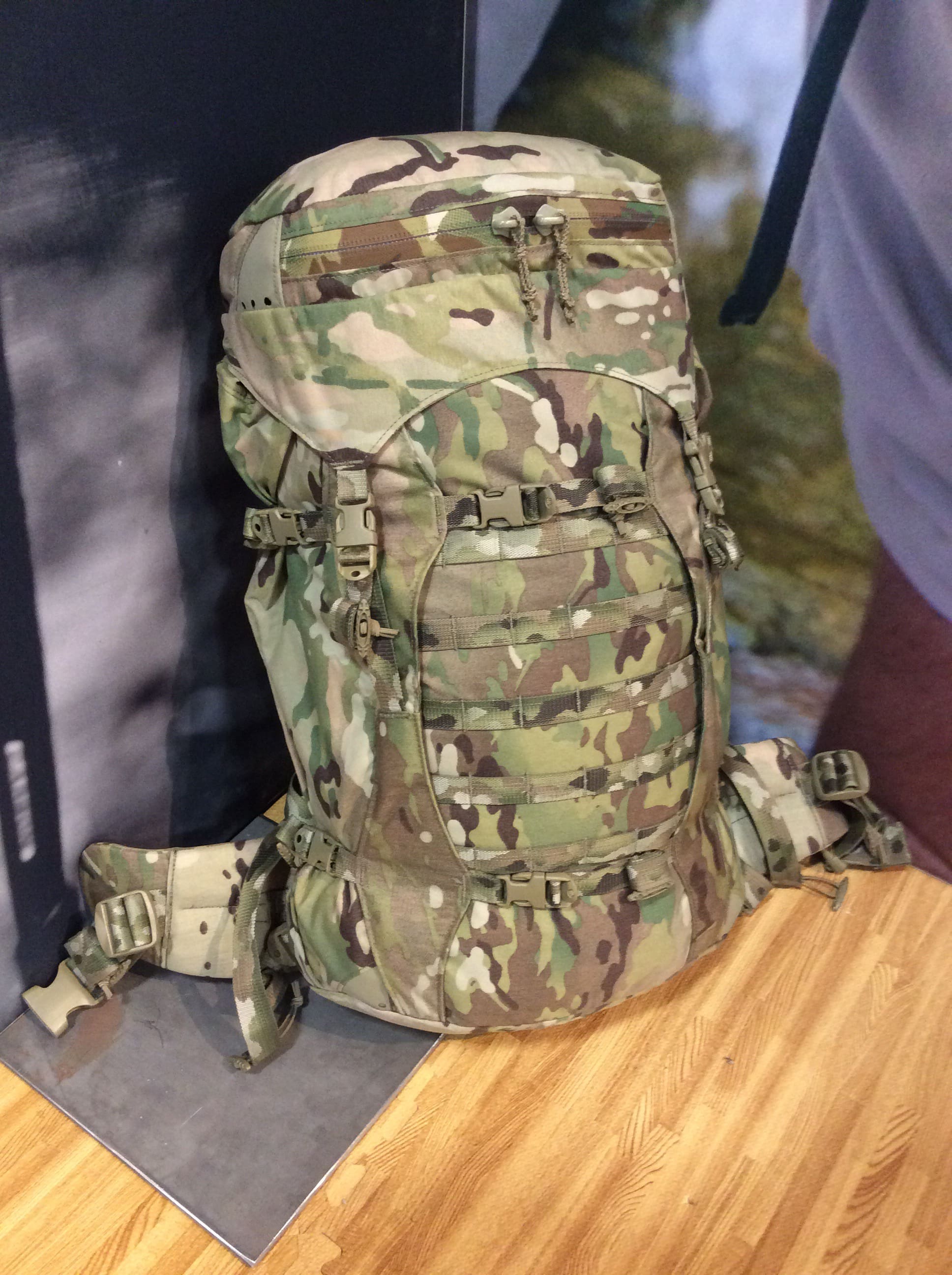
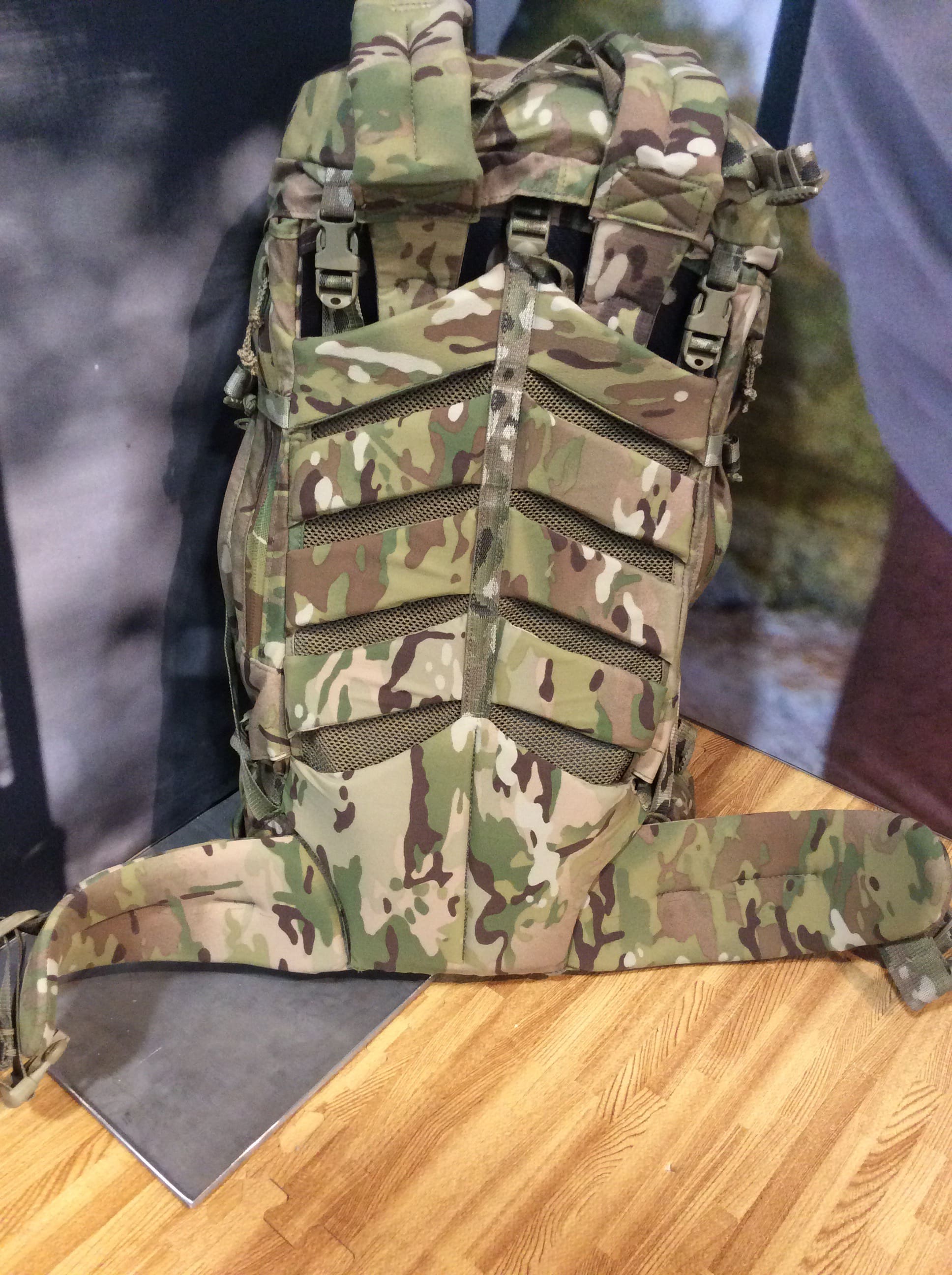
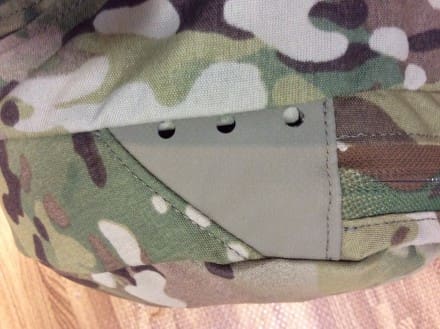
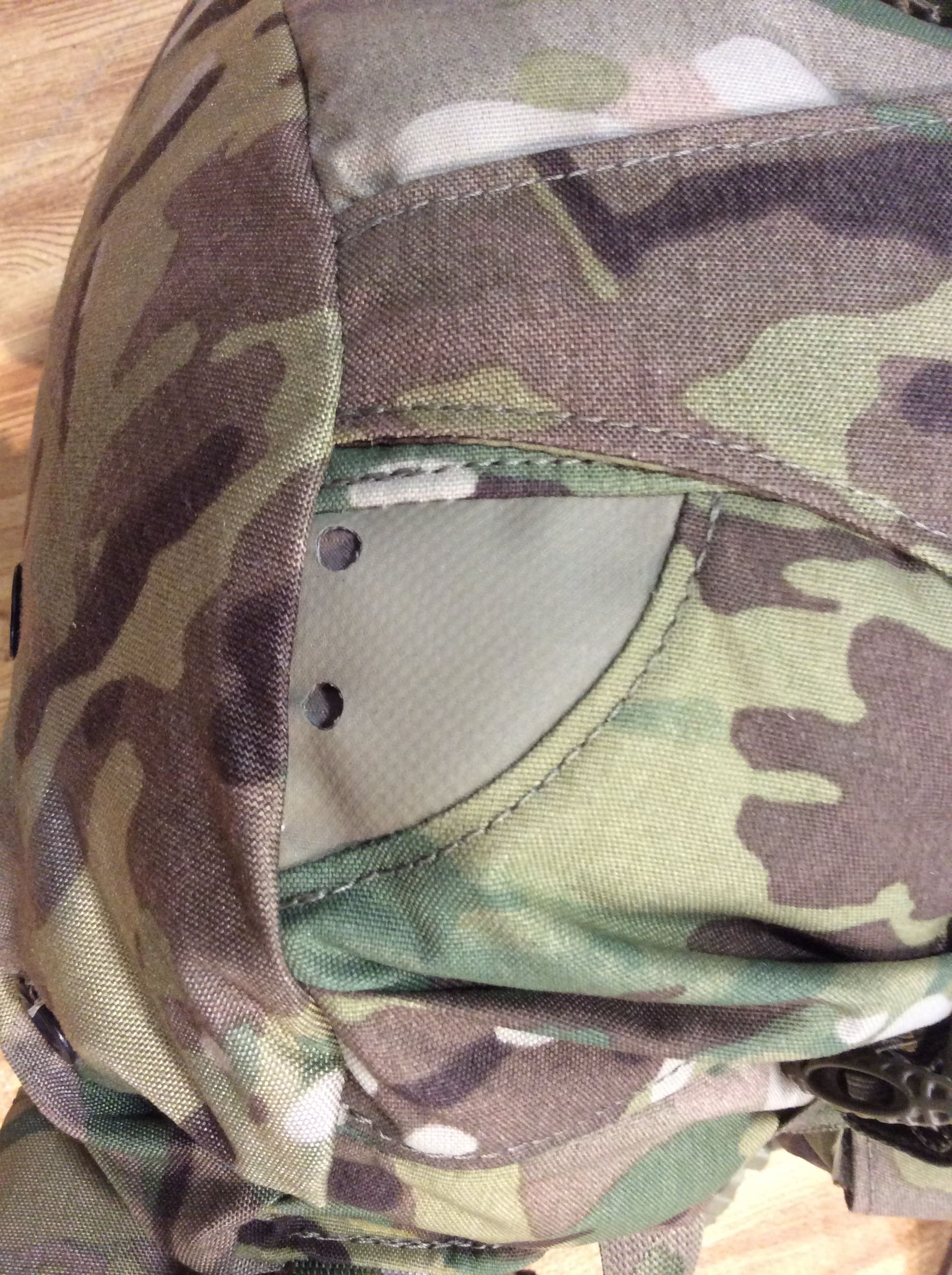
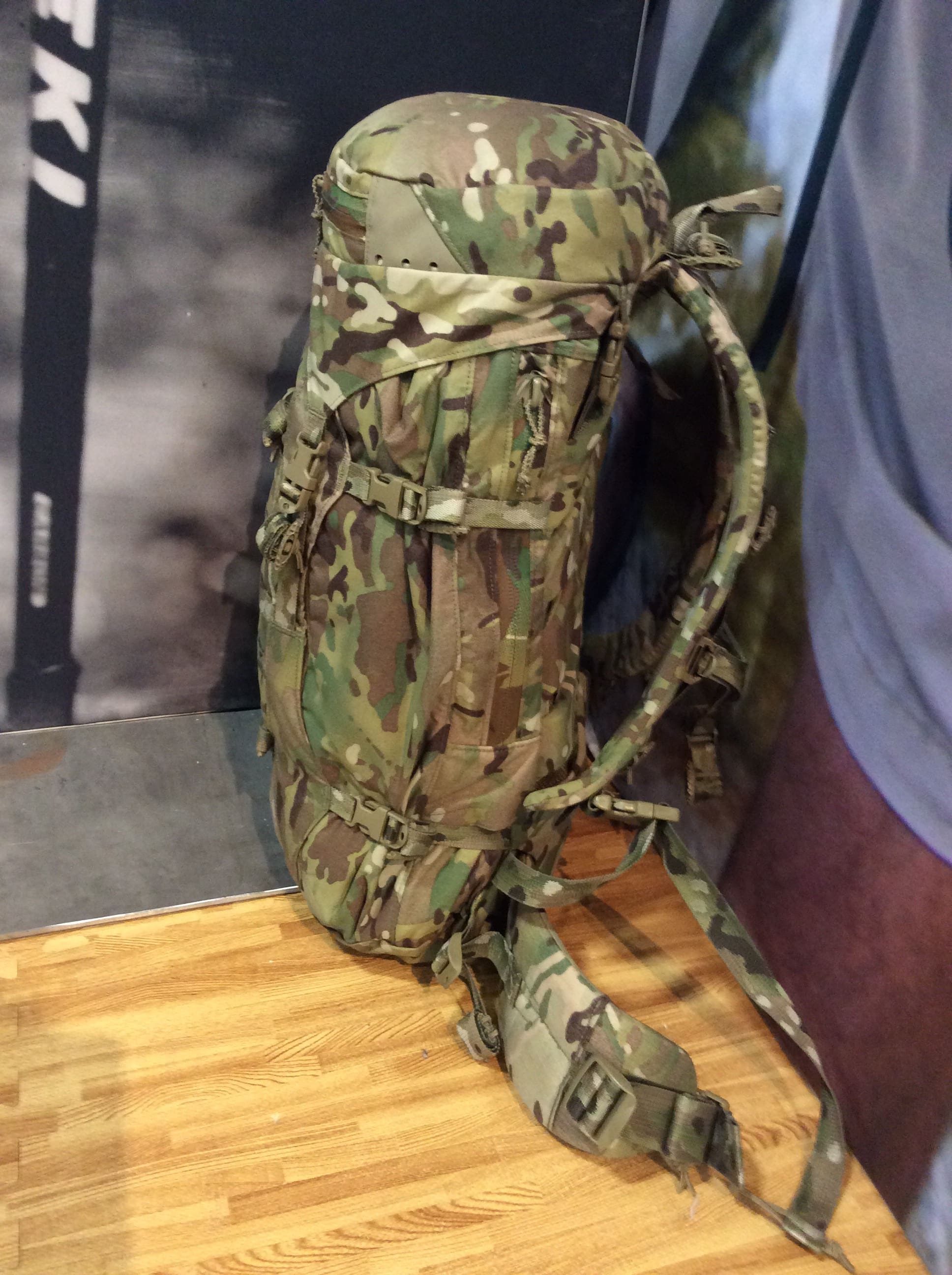
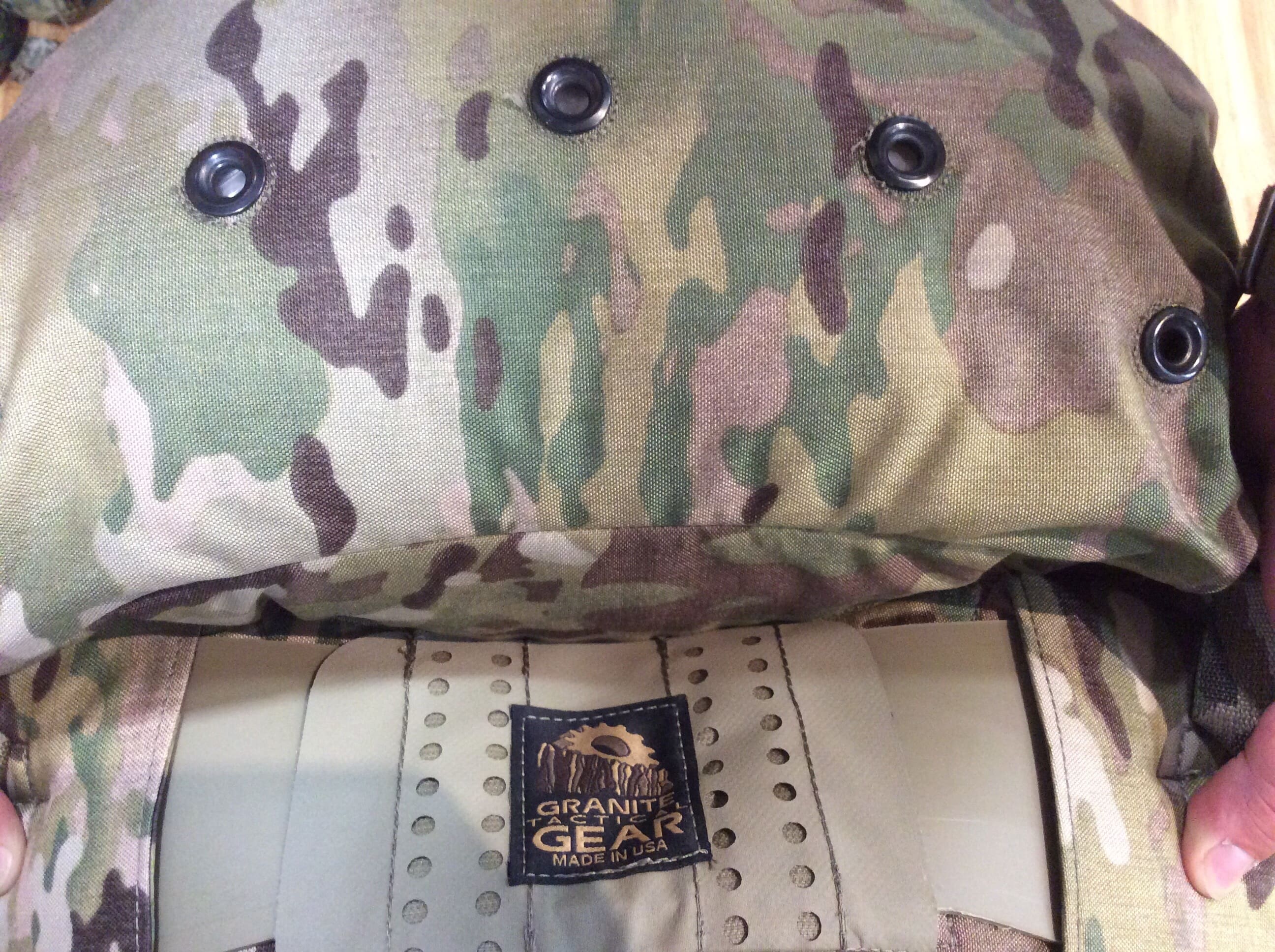
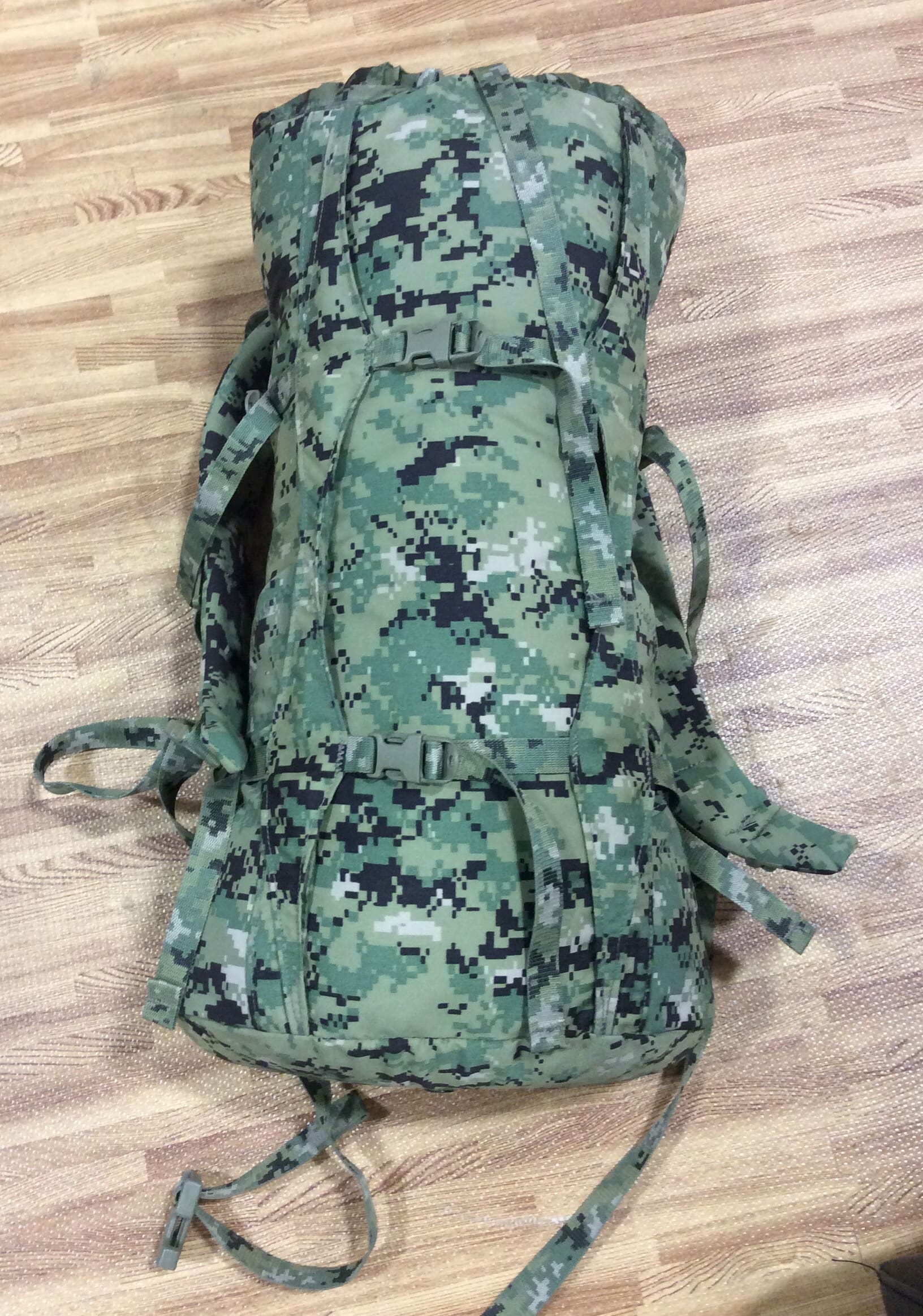
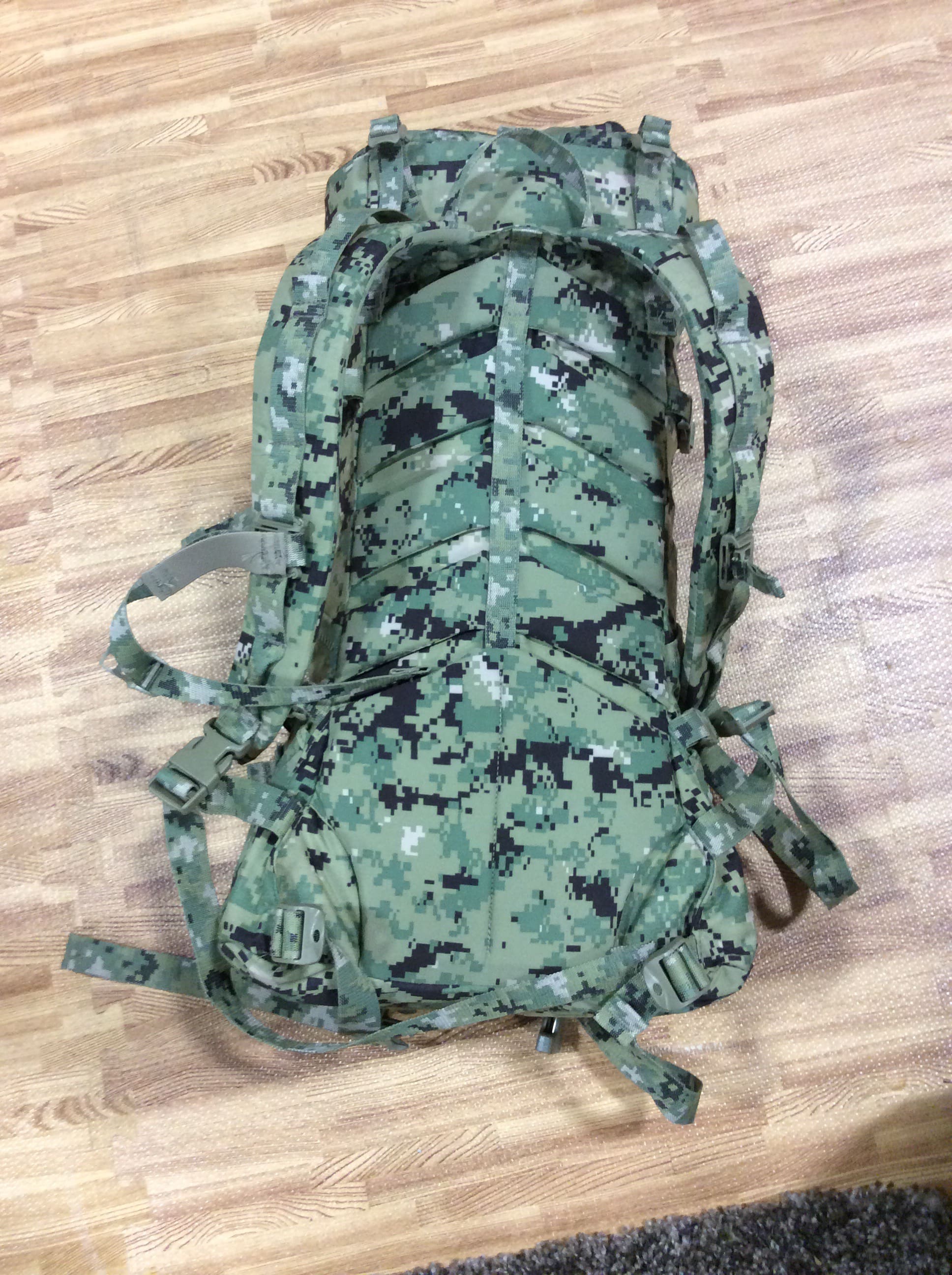
Who are the 3 Jungle Pack finalists?
I guess my question is, what is the doctrine going to be regarding body armor in jungle operations? Will a breathable/comfortable interface to the human back be relevant?
(Well, howdy Mel! Great timing! 🙂 )
Maybe a renewal of the Rhodesian rigs that take a plate in front and have a zip-on option for a plate in the rear? Just thoughts from the hip.
Disregard my question, I found the answer :)!
AbnMedOps :)!
I still really love the concept of a dedicated jungle pack in a pattern that works better in the desert than it does in a jungle.
This is more of a general observation on all the products that industry has promoted as a “jungle” solution and not just these rucks alone.
I can only shake my head when I see things like this as it clearly shows that whom ever designed the item, has never been in a real jungle and had to hump and live in it. If they had, we wouldn’t be seeing things like the rucks, boots, uniforms, etc that we have been seeing as of late.
Now before you drop your bag of cheetos and get orange dust on your keys telling me I don’t know what I am talking about. Yes, I have recently been in a REAL jungle with said new boot(s), “jungle” uniforms and other knick knacks. I also spent a good part of my career in various jungles, not just one area, but several differing ones. In fact, anyone who has been in and lived in the jungle, can easily tell you the same things I have said here, it’s not like I alone hold this hard earned information.
My question (perhaps rhetorical) is why hasn’t industry reached out to people who have this experience and consulted with them before designing admittedly nice looking gear , but ill suited specifically for a jungle environment? I am sure a likely answer would be…”We have, what do you mean?” And I would have to respond with “Where and when was your SME in a jungle last and in what capacity? Along with all the small reasons “why” a particular design doesn’t or won’t work in a jungle environment.
Lessons learned the hard way and or through experience could go a long way in helping find viable new solutions to these equipment needs and the manufacturers producing a product that is actually suitable for the jungle. Instead, all we have seen are ideas/designs that fair poorly when actually put in a jungle ( I’m not talking about Hawaii) and used in the manner they were supposedly designed for.
Industry needs to wake up and reach out to people with REAL experience on living and fighting in the jungle when they sit down with the designers. If and when they do that, we will see a clearly “V8”, that makes sense, moment when said item makes it’s appearance.
What critiques do you have of the designs specifically? And I think you are greatyly underestimating how closely some companies work with the users.
I would rather abstain from going down that path as my intent isn’t to poke Granite Gear or any other companies “jungle” solution in the eye. As that would only lead to senseless bickering and the message I am trying to send would be lost in the chaos and cheeto dust that is the internet.
I will say this, of all the products I have seen industry produce, they all are quality made items, to include the ones I have personally used. They are unfortunately not suitable for use in the jungle environment. They would be great in just about any other environment but the jungle. Making an item, no matter how well made and or designed and slapping the word “jungle” on it doesn’t make it suitable for a jungle environment.
Part of the problem, in my opinion, is that we have a military that has only really known the desert and desert like environments for the past 2 decades give or take. That includes both conventional and SOF. Likewise, industry has followed the wants of the Military and going with what they know. The result is in both the Military and Industry side, we have a condition of “We don’t know what we don’t know” or better expressed as “We’ve forgotten what we know and are trying to reinvent it”
When you have a group of people, be it Military or industry, sitting around talking about a subject that neither has any personal, real world experience being in or have forgotten what it was like, and trying to develop solutions, you get a lot well intentioned but poorly performing results. This is what I am seeing and have been experiencing when using these new items in the jungle. So what we have is “users” coming up with requirement criteria, industry building off of that criteria and “users” not actually using the produced product in a real jungle environment. It is a kin to the blind leading the blind.
I will also throw this out there as I am sure it will come up. Hawaii isn’t the jungle found in the rest of the world, nor does it come close to replicating some of the issues found in jungles in other parts of the world. Those who have been in both will understand what I am talking about.
Yes, yes, but what is so wrong with these designs in specific? Do enlighten those of us who have little or no experience of living in jungle conditions.
I have some experience of boreal forests, sub-Arctic and Arctic, and from this background, judging by the pictures alone, I really can’t figure out what might be so wrong with these dedicated jungle packs. Except the very obvious, the ‘Multicam’ camouflage that is suited for arid and mountainous (or ‘transitional’) regions rather than lush vegetation. Multicam fails in boreal forests too, btw (think Cadpat TW for summer).
Do the problems have something to do with snagging in very dense vegetation, or usability when getting thoroughly muddy? As jungle river banks, perhaps? Or something with the hot-humid-wet conditions in general?
M5, as I stated above, I would rather abstain from starting a laundry list of issues of this ruck or any of the other manufacturers jungle solutions, here in this thread. The foundation or root cause to the issue that also covers your question(s), is lack of a proper understanding of the jungle environment and what it entails.
You understand the artic environment. If you asked for an Artic solution and Industry gave you plastic canteens for your water or shorts, flip flops and a moisture wicking T shirt for cold weather clothing, what would your reaction be to those products? Does that help put it into better context for you?
PLiner,
I would love to have had you work on our proposal ruck. I simply don’t know you. gw@tacticaltailor.com is my email.
We were not given the mission to simply make a jungle ruck. There were call outs and weight restrictions and all kinds of stuff that is hard to articulate. I can share some of the parameters we were given. In the end our submission was a bit heavy and did not use a sexy enough suspension system. Our Local SOF guys found it very appealing and tough.
Industry would love to make you the ruck you want and need based on your experience, however, those running the program that put out the solicitation drove the bus on the call outs. Sometimes we have no choice. At TT we squash the Good Idea Fairy when we can, opting to lean towards the best R&D labs in the world, the end user.
Feel Free to hit me up if you want more info.
GW, I understand your position, I kind of touched on it above in my response to PNW Tree and am also familiar with the nuances of the solicitation for the ruck.
The solicitation criteria is part of the problem and the fix for that is beyond this topic of discussion I know.
As I have said, I have seen some very well made and cool gear produced by industry and the word “jungle” attached to it that would be better suited in any environment but the jungle.
I get that fighting the solicitation system is an up hill and pointless battle and is a gamble for those in industry. But here is what I propose all manufacturers in industry do with regards to the jungle environment specific equipment being sought out. I know this is a gamble but it’s the easiest and quickest fix as far as I can tell.
Forget the solicitation requirements and criteria. Build the best “X” piece of jungle specific equipment using people who have lived for weeks in the jungle out of a ruck and your design team. Produce said product and market it. Guys will start using it because it works. Age old story, issued gear sucks so Joe goes out and buys what works. Finally someone at PEO recognizes that a piece of gear out there works and Joe likes it and then they are interested in something with the right features and design. It’s a back asswards approach I know. But instead of chasing the solicitation, chase and build the solution to the problem (jungle environment) and the solicitation will find it’s way back to the solution.
I think a good mantra industry should adopt when looking at jungle solutions is “Less is more (KISS) ” and ” Look to the past to find the solutions for tomorrow”
Pliner, I understand where you are coming from because I did some time jungle in Panama. But, always a but, when the solicitations go out, there’s usually a short time to respond with a product, so you might be limited to do some R&D unless you are working on a product ahead of time. (Not saying that’s the case in sometimes, because we all know that info does leak out when a solicitation is about to be released, especially in the government ) Now, I loved my large alice ruck, just hated the frame and the pads.. if I would have known about the TT’s should pads and waist pads back them I would have gotten them, unfortunately, I wasn’t aware of TT when I was in Panama..
The army is trying to relearn what it should have never forgotten. JOTC would have paid off in the long run if they would have figured out how to keep it open. The Jungle there sucked, smelled bad, contained nasty critters, and had everything that is need to train in the jungle. you would have thought that some of the Old Crusty SF NCOs that worked there would have come up with ideas for rucks that would have made their lives easier, but they used the same ruck as we did..
Thanks for the response, we have made our business on plugging holes left by the system.
KISS should always win the day.
Just would like to throw a shout out to TT, as someone who rucks with one of your MALICE rucks every week. Your ruck saves me a lot of shoulder pain that my comrades have to deal with because the issued molle ruck sucks. I had a shoulder injury that didn’t start healing until I started using your ruck, so thank you for continuing to invest in the end user and pushing out designs that are proven to work for grunts and not just be sexy on paper.
That being said I really need to send it back to you guys to add a radio pouch haha.
PLiner, thank you for reinforcing my points I’ve been making about this all along, and expressing it with far more depth, scope and insight. Great posts on this page dude.
Jon, OPT
This thread is why I love SSD!! Great info and discussion.
The lack of external pouches disturbs me. There is no scope in the J for digging through your pack and having your gear spread from arsehole to breakfast during the day, people move around during the day, people who don’t like you and the last thing you want to do is have to run off and leave it behind.
It should have water bottles accessible from the outside, bladders are great (apart from promoting poor water discipline) but they aren’t the most resilient things and freaked out loadies have a habit of throwing packs off so they can get back in the air quick. There aren’t the easiest things to refill in a hurry either let alone tactically on the move.
The waist belt doesn’t look like it will interface well with a belt rig, you can wear a chest rig in the J but I personally preferred having the breathability on my core that a belt rig offered, plus it made a good pillow at night and it was easy to change magazines with out having to arch up or roll over when you were trying to dig yourself into the ground with your eyelashes. I know all the benefits of a waist belt but they need to be quicker to remove than what they currently are, guys struggling to remove their pack because they are flapping are guys not returning fire and winning the fire fight.
Alice packs were shite until you got prickly heat from a Bergen or something, then they weren’t so shite. Being designed at the tail end of a big war in SE Asia I guess airflow was one of those things that was paramount in the designers minds.
The SOCOM requirement was no external pockets.
Build your belt rig into the pack and eliminate parasitic weight of redundancy. Make it so you can quick ditch the pack and keep the belt gear on. If quick ditch doesn’t matter, secure the belt to the pack. Easy day.
Why are all these new designs not including a separate sleeping gear compartment? Are we going back to the bad old days when you have pull everything out of the top to get at what you want? I have noticed this trend with a majority of new packs. I also agree with the comment about water bladders V’s bottles.
second this
PLiner, and anyone else who would like to comment on improving gear design, we listen to all feedback and incorporate new ideas in everything we make. Please feel free to tell us what you like, don’t like, and what you need to make you safer and more effective. We will build it the way you need it.
Feedback from our military advisors is the only way we all make better kit.
Comments@attackpak.com
Carry on…
The lack of external pockets seems illogical, why would the requirement be to not have them? I guess that’s why there’s molle straps but built in external pockets are a lot better than pouch attachments IMHO…